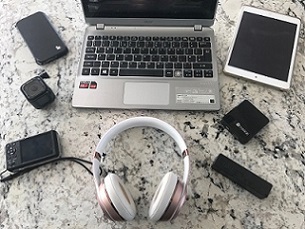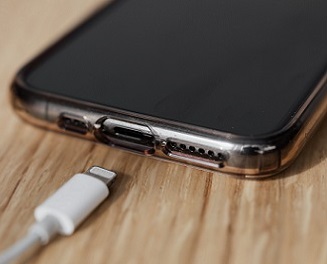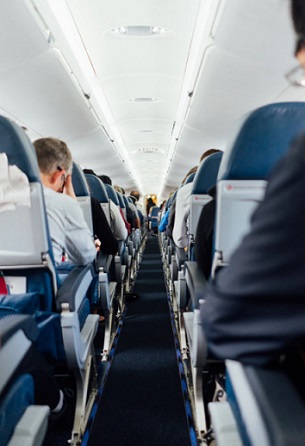 All these personal electronic devices are powered by lithium batteries
All these personal electronic devices are powered by lithium batteries
 Never leave your mobile phone on charge all night
Never leave your mobile phone on charge all night
 The last place you want a lithium battery fire is in the confined space of a passenger aircraft
The last place you want a lithium battery fire is in the confined space of a passenger aircraft
 A pilot with an AvSax lithium battery fire mitigation bag
A pilot with an AvSax lithium battery fire mitigation bag
Lithium batteries power all our essential devices from mobile phones to laptops … but just about everyone is breaking essential safety rules and potentially putting themselves and others in danger.
Golden rules include never leaving mobile phones or other personal electronic devices on charge overnight and never charge them on soft furnishings such as beds or settees as they could easily catch fire if the device overheats.
Yet millions of people worldwide are ignoring these rules so fires caused by lithium batteries are happening far too regularly. The number will continue going up as the global demand for lithium batteries is growing by almost a third every year.
No figures are collated nationally but London Fire Brigade has revealed it attends 24 fires every week started by chargers, batteries and cables. That must mean there are tens of thousands of fires across the UK started by products linked to lithium-ion batteries every year.
London’s firefighters are in no doubt about the main culprit sparking lithium battery fires, stating: “Counterfeit electrical chargers can be deadly. Many fail to meet UK safety regulations leading to fires and injury. What may seem like a bargain isn’t worth the risk when you consider that it could cost a family member’s life.”
Around half of all fires in recycling depots in the UK are caused by lithium battery fires being thrown into household rubbish instead of being taken to battery collection points – you’ll see them in many supermarkets.
The problem is worldwide. In Newy York alone, lithium battery fires have caused 60 fires in the city in the first four months of 2022, causing five deaths and 66 injuries. There were just 18 fires for the same period in 2021.
Firefighters in New Zealand have tackled 35 house fires caused by batteries so far this year.
Planes are especially vulnerable to lithium battery fires as the last place you’d want a fire giving off toxic smoke is in the confined space of a passenger aircraft. More than 80 airlines worldwide carry AvSax lithium battery fire mitigation bags that use liquid inside them to keep the overheating battery cool.
AvSax, which won the prestigious Queen’s Award for Enterprise in the UK, are also known as ‘burn bags’ and are now on more than 15,373 aircraft worldwide and have been used 33 times to deal with emergencies since the start of 2017. Every time they have been deployed the aircraft has been able to complete its journey safely with no need to divert or make an emergency landing.
When lithium batteries overheat they go into what’s called thermal runaway – a rapid and uncontrolled chemical reaction which burns at exceptionally high temperatures. When one cell in a battery overheats it can produce enough heat - up to 900°C (1652°F) - to make adjacent cells overheat too even to the point where the battery shoots flame out or even explodes.
So here’s the essential guide to keeping lithium batteries safe and the personal electronic devices we are talking about include mobile phones, tablets, iPads, e-cigarettes, laptops and headphones.
Don’t:
Do: